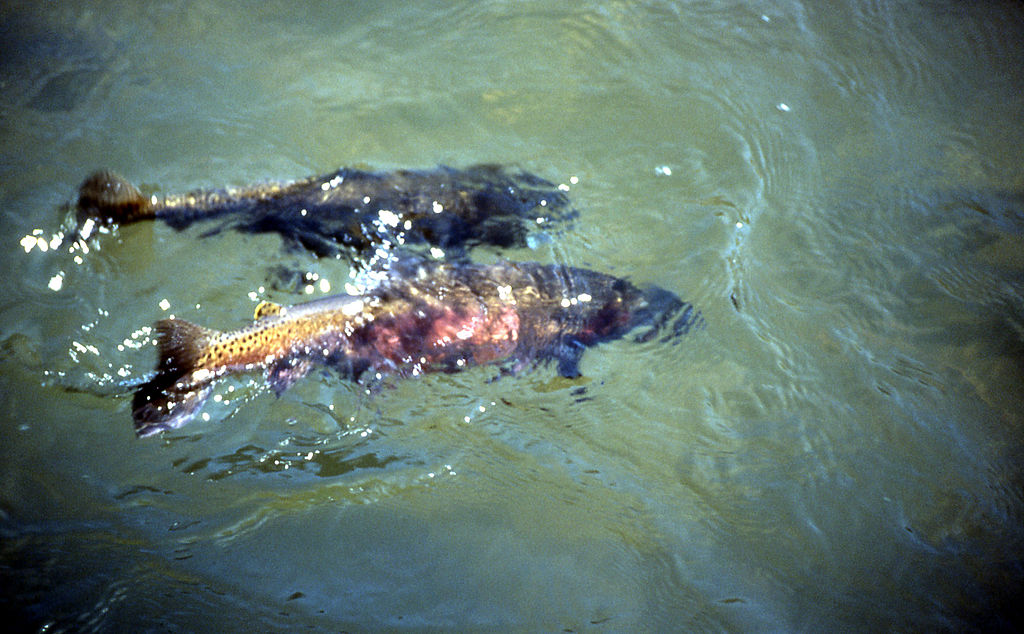Key Difference – Amniotes vs Anamniotes
Amniotes and Anamniotes are two vertebrates groups. The key difference between Amniotes and Anamniotes is that Amniotes are higher vertebrates including reptiles, birds, and mammals while anamniotes are lower vertebrates including fishes and amphibians.
Classification is the systematic grouping of organisms based on their morphological, structural, genetical, evolutionary similarities and dissimilarities for the ease of identification. Different classification systems were introduced with time and some were disregarded while some systems are still using. For the communication easiness, some less familiar classification systems are also informally used and the vertebrate classification into two groups; Amniotes and Anamniotes is one such.
CONTENTS
1. Overview and Key Difference
2. What are Amniotes
3. What are Anamniotes
4. Similarities Between Amniotes and Anamniotes
5. Side by Side Comparison – Amniotes vs Anamniotes in Tabular Form
6. Summary
What are Amniotes?
Amniotes are a group of higher vertebrates who have an extra-embryonic membrane called amnion during the embryonic stage. This group includes animals such as reptiles, birds, and mammals. They are tetrapods, meaning they have four limbs. Amniotes do not lay eggs in water instead they lay eggs on lands or they keep fertilized eggs within the mother organism.

Figure 01: Amniotes
The presence of the amnion is the characteristic feature that is used to separate higher vertebrates from lower vertebrates. The group Amniota was first introduced by Ernst Haeckel in 1866.
What are Anamniotes?
Anamniotes are a group of lower vertebrates who do not have an amnion during their embryonic stage. Anamniotes depend on water for reproduction. They lay eggs in water.

Figure 02: Anamniotes
Moreover, they possess a permeable skin that is used to diffuse water and gasses. Anamniotes include fishes and amphibians. They possess gills during their lifetime.
What are the Similaties Between Amniotes and Anamniotes?
- Both Amniotes and Anamniotes are vertebrates.
- Both include tetrapods animals.
What is the Difference Between Amniotes and Anamniotes?
Amniotes vs Anamniotes | |
| Amniotes are higher vertebrates who have an amnion during their embryonic stage. | Anamniotes are lower vertebrates who do not have an amnion during their embryonic stage. |
| Vertebrate Classification | |
| Amniotes are higher vertebrates. | Anamniotes are lower vertebrates. |
| Included Animal Groups | |
| Amniotes include reptiles, birds and mammals. | Anamniotes include fishes and amphibians. |
| Presence of Gills | |
| Amniotes do not bear gills. | Anamniotes have gills during their lifetime. |
| Presence of Amnion during the Embryonic stage | |
| Amniotes have an amnion during their embryonic stage. | Anamniotes do not have amnion in their embryonic stage. |
| Necessity to Return to water for Reproduction | |
| Amniotes are not needed to go to water for reproduction. | Anamniotes are required to go to water for reproduction. |
| Laying Eggs | |
| Amniotes lay eggs on land or keep the fertilized egg within the mother body. | Anamniotes lay eggs in water. |
| Presence of a Permeable Skin | |
| Amniotes do not have a permeable skin. | Anamniotes have a permeable skin for the exchange of water and gasses. |
Summary – Amniotes vs Anamniotes
Amniotes and Anamniotes include higher vertebrates and lower vertebrates respectively. Presence of an amnion is the basic feature of amniotes and absence of an amnion is characteristic to anamniotes. Amniotes are not using the water for reproduction while anamniotes are dependent on water for reproduction. Anmiotes include birds, reptiles and mammals while anamniotes include fishes and amphibians. This is the difference between amniotes and anamniotes.
Reference:
1.Zug, George R. “Amniota.” Encyclopædia Britannica, Encyclopædia Britannica, Inc., 2 May 2016. Available here
2.“Anamniotes.” Wikipedia, Wikimedia Foundation, 14 Mar. 2018. Available here
Image Courtesy:
1.’Chicken egg diagram’By KDS4444 – Own work, (CC BY-SA 4.0) via Commons Wikimedia
2.’Cut-throat-spawning-15271’By Ed Austin & Herb Jones – NPS, (Public Domain) via Commons Wikimedia
ncG1vNJzZmivp6x7pbXFn5yrnZ6YsqOx07CcnqZemLyue8OinZ%2Bdopq7pLGMm5ytr5Wau26tzKegqKyVqHqiusNmraxlkaOurrrIqKueq18%3D